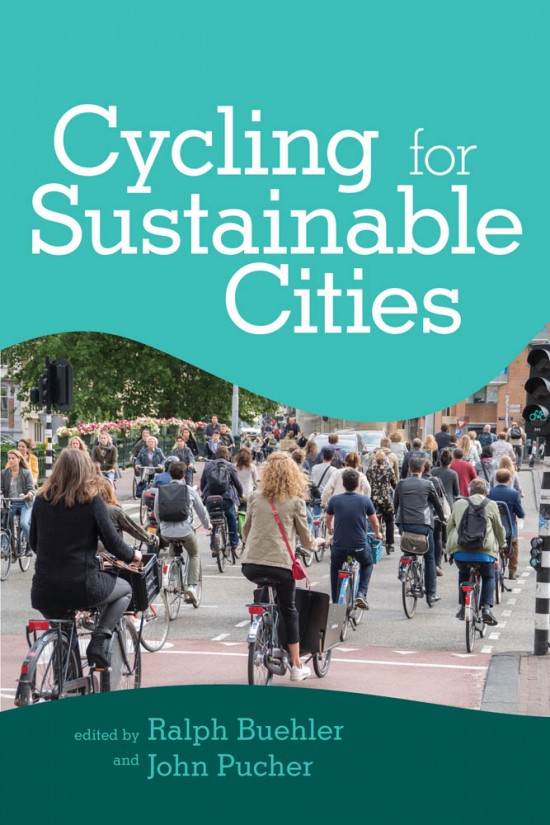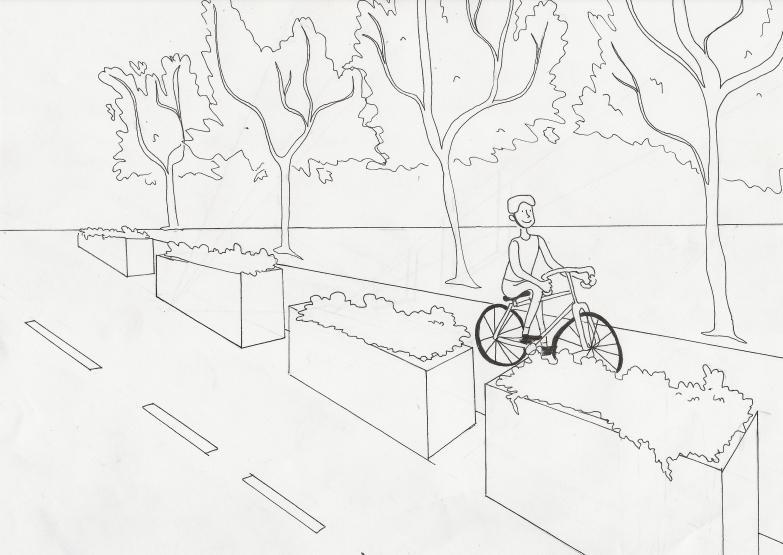Buehler, Ralph, and John Pucher, eds. Cycling for sustainable cities. MIT Press, 2021.

Cycling for Sustainable Cities, edited by Buehler and Pucher, reflects on the upward trends and qualities of cycling between different demographics in cities. A central premise of Cycling for Sustainable Cities is that cycling is the “most sustainable urban transport mode,” and how the act of city cycling is becoming more and more popular in everyday life in city centres, especially in older adult age groups. Over twenty-one chapters, authors discuss effective strategies that can increase and improve everyday cycling in cities. The contributors present proof that, within the city, increased cycling decreases traffic, leading to the reduction of air pollution and gas emissions from excessive traffic, a decline in risks and rates of traffic injury, and a decrease in noise pollution. Not only does cycling improve transportation problems, but it also improves livability, wellness, and community.
To increase the popularity and amount of cycling, Cycling for Sustainable Cities describes the need to establish social space through cycling education and awareness and the challenge of finding a physical space to establish the social space. Having an established physical and social cycling space is important to allow citizens to have the opportunities to enter into cycling. They establish four types of physical bike paths in their chapters about cycling infrastructure: stand alone paths (shared with pedestrians and are located in parks and communal areas), protected bike lanes (lanes that run along the road but are separated), conventional bike lanes (lanes that were blocked off with only a painted line), and driving-cycling hybrid roads (the combination of biking and driving cars on the same road). While these bike infrastructures embody the physical spatialization of cycling, some of the types exemplify it better than others.

Cycling for Sustainable Cities maintains that, in order to improve the social space of biking, we must be able to increase people’s confidence about cycling, and it must be seen as safe and attainable. So, stand alone and protected bike lanes are the most ideal versions of physical cycling space, since these paths are separated physical space, and allow for the social space and community to thrive. The other types of paths do not have the necessary spatialization to support new cyclists and cyclist communities. Once physical space is established, social space then has the opportunity to be developed, which, as mentioned before, fosters cycling attitudes and habits. The book showcases different community cycling events in many different countries that “help to increase awareness of bicycling as a mode of transport and can enhance social norms around bicycling”. The addition of more cycling websites, conferences, and city groups can also increase confidence and safety awareness to not only foster cycling habits, but to maintain and increase the popularity of urban cycling. Ultimately, this book is a defense and a support on why cycling is the best option for city dwellers. Cycling for Sustainable Cities establishes that cycling has positive impacts on health, safety, city structures, finances, and mental health, wellness, and community. Overall, we can be confident that the creation of physical cycling spaces will cultivate and maintain social spaces and will positively impact city centres and urban areas.
- Maggie Godziuk